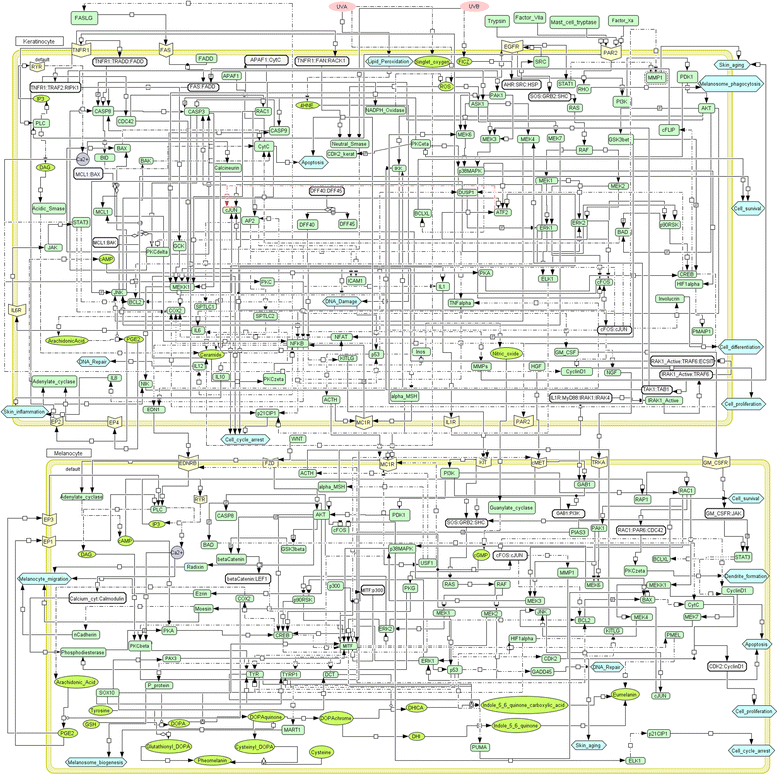A molecular systems approach to modelling human skin pigmentation: identifying underlying pathways and critical components
- PMID: 25925987
- PMCID: PMC4424494
- DOI: 10.1186/s13104-015-1128-6
A molecular systems approach to modelling human skin pigmentation: identifying underlying pathways and critical components
Abstract
Background: Ultraviolet radiations (UV) serve as an environmental stress for human skin, and result in melanogenesis, with the pigment melanin having protective effects against UV induced damage. This involves a dynamic and complex regulation of various biological processes that results in the expression of melanin in the outer most layers of the epidermis, where it can exert its protective effect. A comprehensive understanding of the underlying cross talk among different signalling molecules and cell types is only possible through a systems perspective. Increasing incidences of both melanoma and non-melanoma skin cancers necessitate the need to better comprehend UV mediated effects on skin pigmentation at a systems level, so as to ultimately evolve knowledge-based strategies for efficient protection and prevention of skin diseases.
Methods: A network model for UV-mediated skin pigmentation in the epidermis was constructed and subjected to shortest path analysis. Virtual knock-outs were carried out to identify essential signalling components.
Results: We describe a network model for UV-mediated skin pigmentation in the epidermis. The model consists of 265 components (nodes) and 429 directed interactions among them, capturing the manner in which one component influences the other and channels information. Through shortest path analysis, we identify novel signalling pathways relevant to pigmentation. Virtual knock-outs or perturbations of specific nodes in the network have led to the identification of alternate modes of signalling as well as enabled determining essential nodes in the process.
Conclusions: The model presented provides a comprehensive picture of UV mediated signalling manifesting in human skin pigmentation. A systems perspective helps provide a holistic purview of interconnections and complexity in the processes leading to pigmentation. The model described here is extensive yet amenable to expansion as new data is gathered. Through this study, we provide a list of important proteins essential for pigmentation which can be further explored to better understand normal pigmentation as well as its pathologies including vitiligo and melanoma, and enable therapeutic intervention.
Figures

 , inhibition as
, inhibition as  , expression as
, expression as  and third molecule regulation as
and third molecule regulation as  . The schema also describes paracrine (reactions occurring within a compartment) and autocrine (reactions occurring cross-compartmentally) signalling.
. The schema also describes paracrine (reactions occurring within a compartment) and autocrine (reactions occurring cross-compartmentally) signalling.

References
-
- Rees JL, Harding RM. Understanding the evolution of human pigmentation: recent contributions from population genetics. J Invest Dermatol. 2011;132(3 Pt 2):846–53. - PubMed
Publication types
MeSH terms
LinkOut - more resources
Full Text Sources
Other Literature Sources

